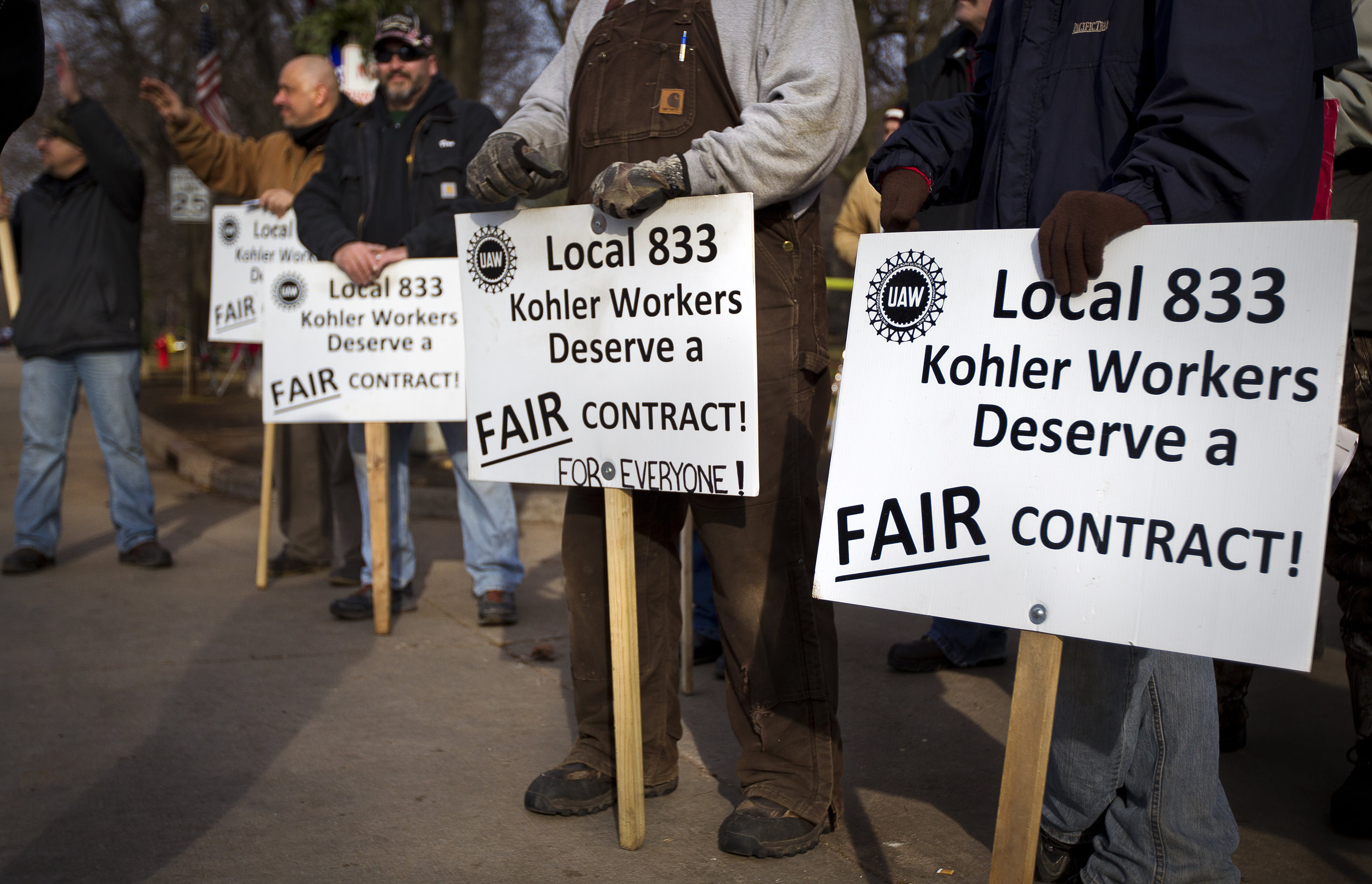This past week, I was given the opportunity to work on another fascinating assignment with the New York Times and reporter Julie Bosman in covering the on-going strike between management and employees of the Kohler company outside Sheboygan, Wisconsin.
KOHLER, WI — DECEMBER 9, 2015: Jeff Radtke, a 28 year veteran in the Kohler Pottery department looks down the picket line outside the Kohler facility, Tuesday, December 8, 2015.
I was able to spend the better part of a day walking along the picket line, capturing the scene and learning more about their stories, motivations, and emotions.
Most of all, perhaps, I was struck by the particular demographic most common amongst the strikers:
28 years of work at Kohler. 36 years of work at Kohler. 42 years of work at Kohler.
These were employees that had truly dedicated their lives to the company. More interesting still is the fact that the proposed changes to the Kohler pay scale — one of the root causes for the strike— affects a proportionally small minority of these veteran employees.
KOHLER, WI — DECEMBER 9, 2015: UAW Local 833 employees strike outside the Kohler manufacturing facility, Tuesday, December 8, 2015. Around 2,100 Kohler employees and union members are currently maintaining a 24/7 picket line outside the plant.
Worker after worker Julie and I spoke to reiterated similar points: We’re doing this for the ones just starting out, the youngest ones at the company, the ones hit the hardest, and the ones with the least means to weather the change.
KOHLER, WI — DECEMBER 9, 2015: Dale Mand, a Kohler employee of 43 years in the Engine plant, looks on at other Local UAW 833 strikers outside the Kohler facility, Tuesday, December 8, 2015. Around 2,100 Kohler employees and union members are currently maintaining a 24/7 picket line outside the plant.
The level of camaraderie and support from one employee to another at Kohler truly was a sight to behold. Sounds like the ball is in your court, Kohler.






















